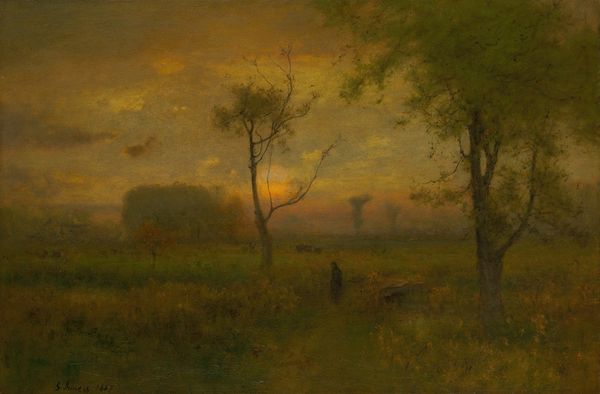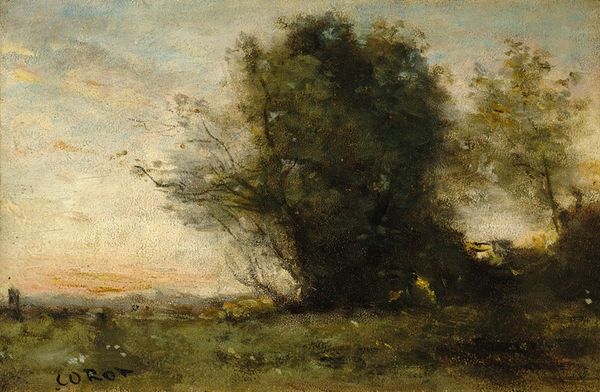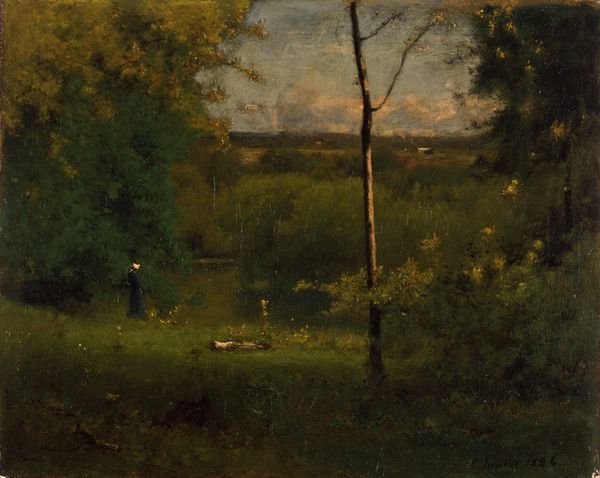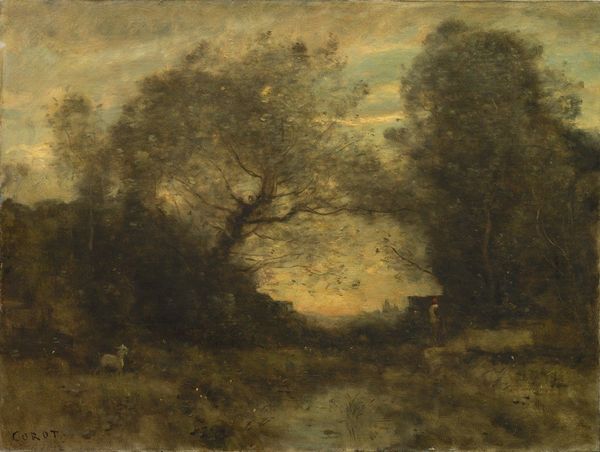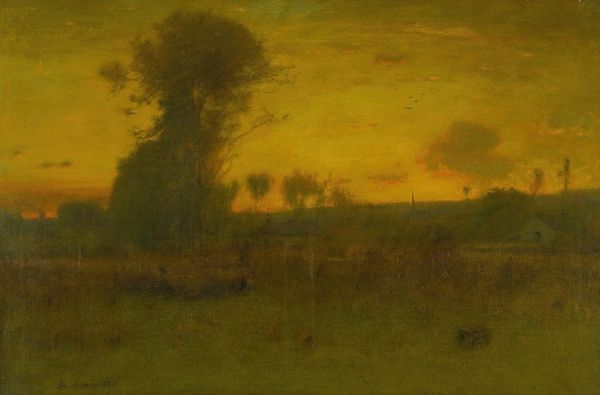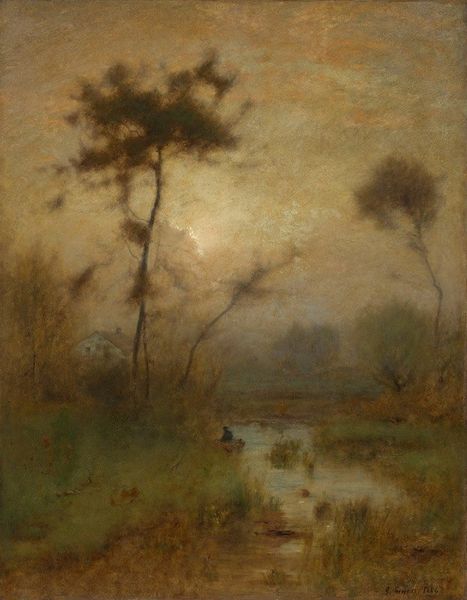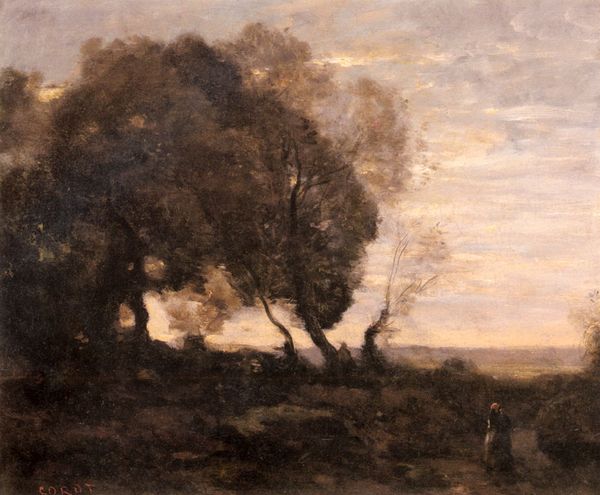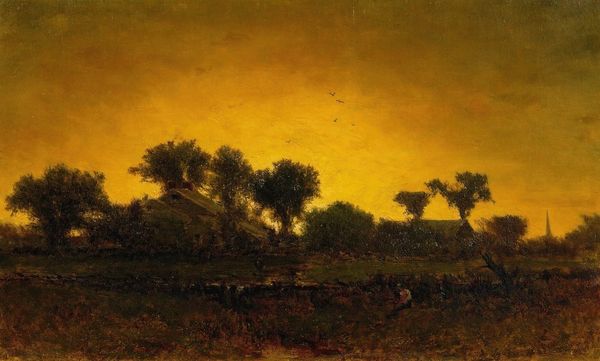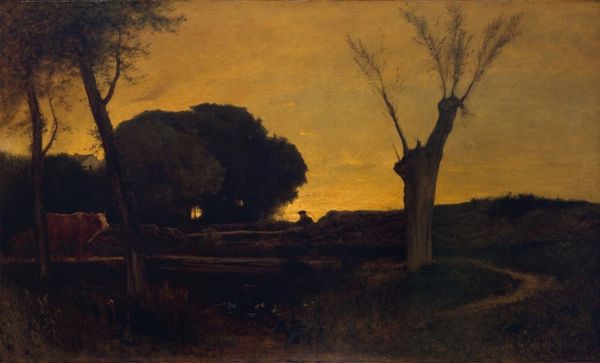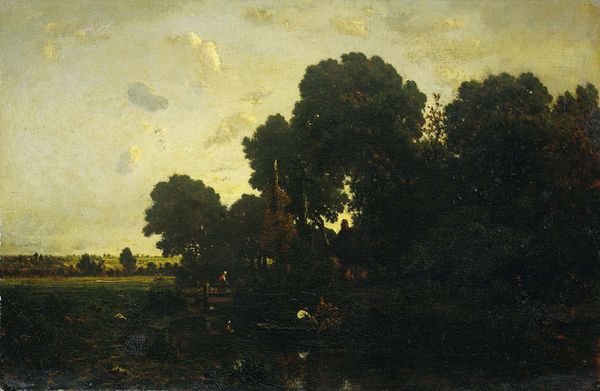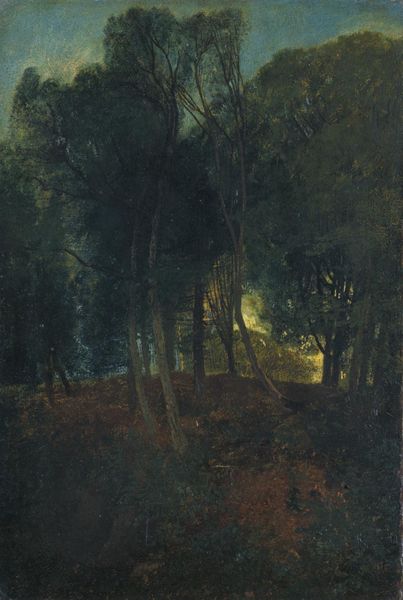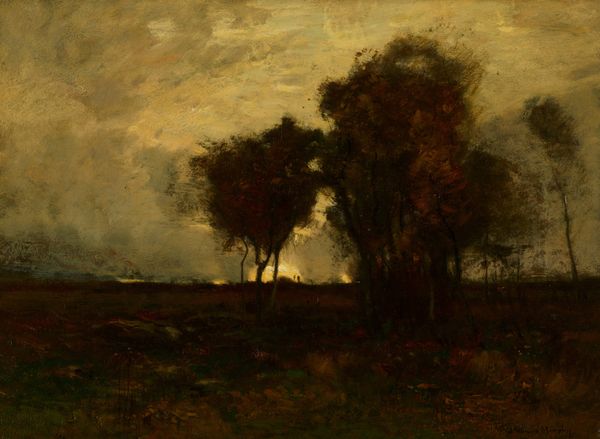
Copyright: Public domain
Editor: We're looking at George Inness's "In the Gloaming," painted in 1893, an oil painting depicting a hazy landscape. I find its muted colors and soft brushstrokes quite dreamlike and a little melancholic. What formal elements stand out to you in this piece? Curator: Observe how Inness manipulates tonal values to create depth and atmosphere. The painting is structured around a limited palette, primarily greens and yellows, where variations in lightness and darkness articulate forms. How does the interaction of color and light influence your perception of space? Editor: I notice how the light source, though obscured, seems to diffuse through the foliage, creating a sense of mystery and flattening certain areas. Does this play with traditional landscape conventions? Curator: Precisely. Note how the brushwork eschews detailed representation for a more suggestive, abstract approach. Forms dissolve into one another; outlines blur. What effect does this lack of clear delineation have on the viewer? Editor: It definitely draws more attention to the textures and the emotional tone, and the imprecision makes me focus on the light itself as a subject. So, it’s about deconstructing rather than depicting nature? Curator: Indeed. It moves beyond simple mimetic representation towards an exploration of visual sensation and emotional response, emphasizing surface and the materiality of paint, engaging ideas present in contemporary Symbolist painting. Editor: That’s a different way to see the romantic elements. Curator: The flattening and ambiguous forms create both spatial ambiguity and symbolic resonance, pushing boundaries that redefine our experience. Editor: It makes me appreciate Inness’s bold rejection of straightforward representation.
Comments
No comments
Be the first to comment and join the conversation on the ultimate creative platform.
